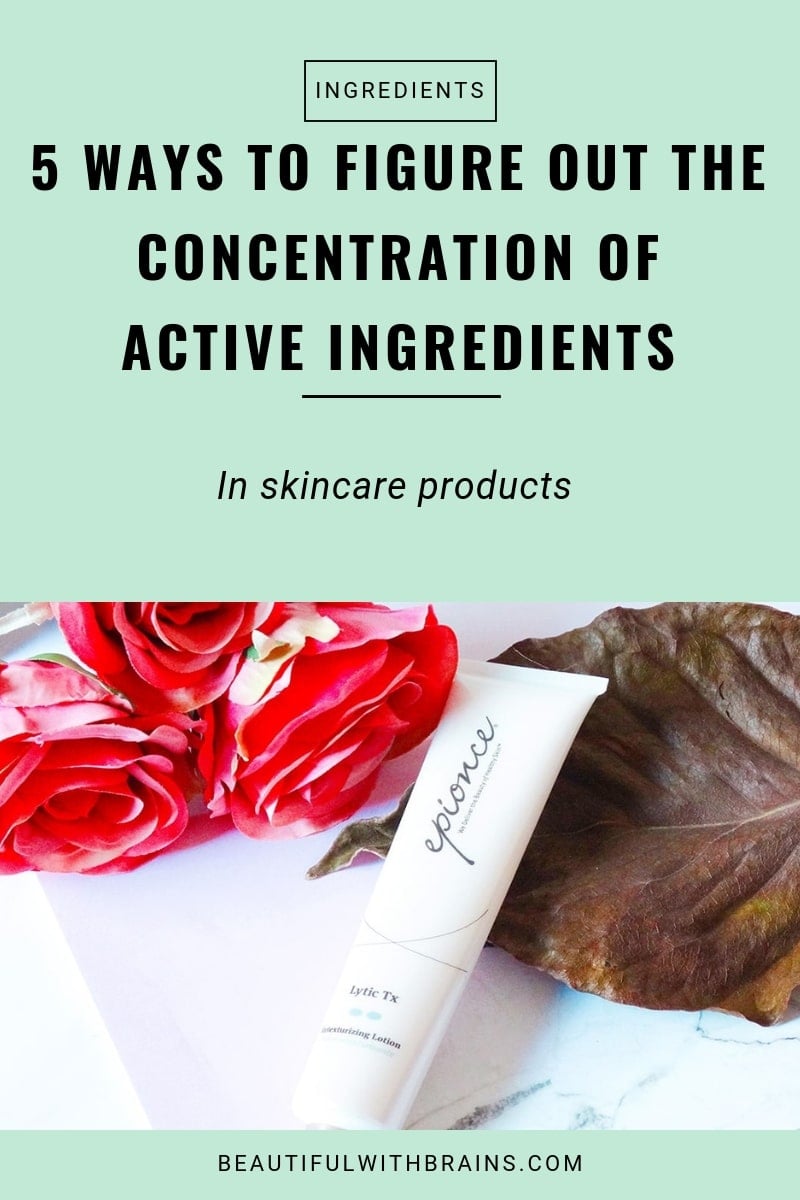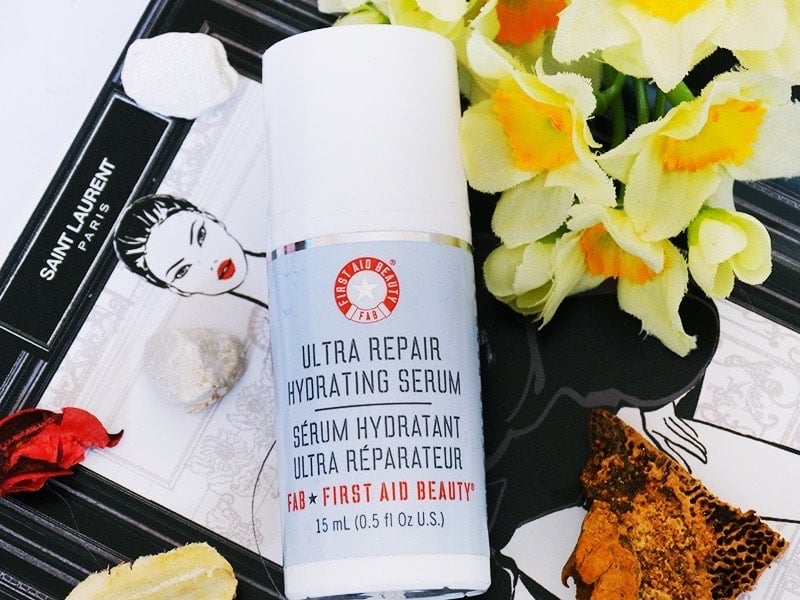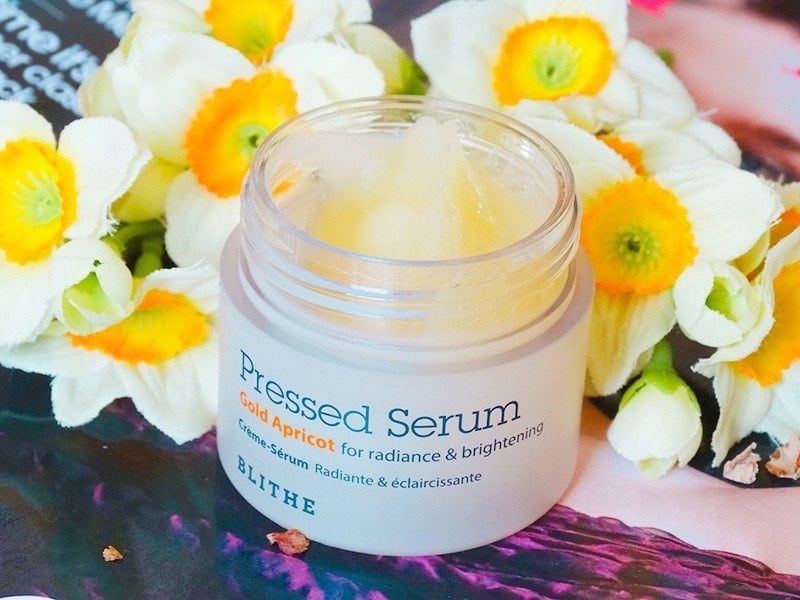
Truth bomb: just because a serum has vitamin C, it doesn’t mean it’ll help you keep wrinkles away.
(By the way, you can substitute vitamin C with any other ingredient).
It’s not just what’s in a serum that matters. How much of it is in the serum does, too. If you add 15% vitamin C to an anti-aging serum, you’ve got a winner. But if you add only 1%, it won’t do anything for wrinkles, my smart friend. Too little vitamin C is useless.
But how do you know if a serum has enough vitamin C (or whatever other goodie) to do the job?
Sometimes brands make it easy for you. They’re so proud of their concoctions, they declare the amount of goodies on the packaging.
Most of the time, they don’t. You have to become a detective and figure out the concentrations of active ingredients yourself.
The worst part? There are no exact rules to follow. Only loose guidelines to make the guessing game easier:
1. Order Of Ingredients
On the labels, ingredients are listed in descending order of concentration.
The ingredients that make up the bulk of the formula go first and those that are just sprinkled in go last. If you see vitamin C towards the end of the ingredient list, those alarm bells should start ringing!
By the way, the first ingredient is usually the vehicle, the one that delivers the active ingredients into the skin. It’s usually water.
Now, time for the exceptions.
Related: The Complete Guide To Vitamin C In Skincare: What It Is, What It Does, And Side Effects
Struggling to put together an anti-aging routine that fights wrinkles and gives you a youthful glow? Download your FREE “Best Anti-Aging Skincare Routine” below. It features product recommendations + right application order:
2. Active Ingredients May Be Listed Separately
Active ingredients are those that do the real job. In sunscreens, they’re the UV filters. In cleansers, they’re the cleansing agents. In anti-aging serums, they’re the antioxidants.
Sometimes, the active ingredients are listed separately, BEFORE all the other ingredients. I love it when brands do this because they usually list the concentration right next to the active. For ex: salicylic acid, 2%.
That’s when you realise that an ingredient doesn’t necessarily have to be used in a high dose to work. Usually, that’s what you want, a big dollop. But a few actives, like salicylic acid and retinol, work well even at low concentrations (<2%).
FIY: Most sunscreens list ingredients this way.
Related: Why Salicylic Acid Is Key To Acne-Free Skin

3. Ingredients Present In 1% Or Less Concentration May Be Listed In Any Order
Let’s be honest here. Most of the ingredients that make up your serum or cream are present at 1% or less. This matters.
Any ingredient used in concentration of 1% or less can be listed in any order. In other words, the label starts listing ingredients in descending order but once it hits the 1% mark, it just adds ingredients at random.
If they’re all present at (roughly) the same amount, the concentration criteria becomes useless.
If they’re all present at (roughly) the same amount, the concentration criteria becomes useless.

4. Filler Ingredients
How do you know where the descending order of ingredient stops being followed and the random one begins? Look what the Beauty Brains call “filler ingredients”.
Filler ingredients are there to trick your into thinking a product is more natural than it is. They’re usually a bunch of natural extracts sprinkled in so the brands can say “contains lavender/rosemary/tomato” on the packaging. These ingredients may very well work, but not in 1% or less concentrations!
(P.S. Most of the time, the ingredients the brands points out in their marketing copy are fillers).
Anything that comes after fillers, fragrances or preservatives is likely to be at 1% or lower concentration.
Related: Which Preservatives Are Both Effective AND Safe?

5. The First Five
The first five ingredients make up the bulk of the formula. It’s these you should pay the most attention to.
The first ingredient (usually water) makes up between 75% and 95% of a product! The following four between 5% and 4%. After them, you’ll start to see fillers, preservatives, thickeners… everything else basically.
In a moisturizer, for example, the first ingredient is often water and the other four emollients and silicones.
If your moisturiser claims it contains jojoba oil to moisturise skin but you notice it didn’t make the top 5, that’s not what’s really gonna moisturise your skin. The synthetic emollients and silicones in the top 5 will.
Bottom line
Trying to figure out how much of an ingredient is in a skincare product is tricky! I hope these guidelines will make it easier for you to determine if that serum or cream you’re eyeing has what it takes to do the job.

Great tips! I often look at ingredients lists to see if a product is genuine — I often find some body and skincare products put a fancy-sounding ingredient (usually plant-based) in their name, but that ingredient is really low on the list.
Eight, I’m glad you enjoyed the post. And that’s so true. A lot of brands use these plant-based ingredients to sound gentler and safer to attract consumers, but in a lot of cases, they don’t really do anything.
@Eight – It’s hard to ignore the loud flashy words on the front of a packaging. Especially when the back of the label is so tiny our eyes start to go cross-eyed.
@Gio – The first five makeup ingredients really does help give you a bigger picture of what we’d get. I love to use this on food items as well. Thank you for providing us your tips.
Judy, my pleasure. Glad you find this useful. 🙂
The trouble I went through to get the percentage of salicylic acid in, hm, Clean & Clear’s (and Garnier’s) products…
What does it mean when the ingredients are listed like this:
Water … … … Water/Ubiquinone/[Ingredient A] … Water/[Ingredient B] … … … [B]/[C].
I saw it today on some Eveline creams and it confused me – the same ingredient is listed multiple times, and somehow with other ingredients, so it’s not the Water/Aqua use of the slash.
Wait, I found a box:
Aqua / Water, […] Dimethicone, Titanium Dioxide, Hyaluronic Acid, Water / Butylene Glycol / Laminaria Hyperborea Extract, […] Polysorbate 20 / PEG-20 Glyceryl Laurate / Water / Tocopherol / Linoleic Acid / Retinyl Palmitate, Panthenol…
Ana, that’s the first time I’ve come across an ingredient list like that. It’s very weird and confusing indeed. I did some digging, though, and found out that the slash symbol has different meanings.
According to the Health Canada website: “In most cases, a slash does not mean “and” or “or” but rather indicates a reaction between each ingredient on either side of the slash, e.g. Acrylates/Styrene Copolymer. In the case of botanical ingredients, where a slash is between plant parts, this means that all the indicated plant parts are used in the preparation. For example, for Camellia sinensis flower/leaf extract, the flower and leaves were used in the extraction.”
SpecialChem says this: “Polymers have become more complex over the past few years as new controlled process are commercialized. They are named from the starting monomers in alphabetical order, with slashes (/) between each monomer ”
It may also be, although this is only a supposition of mine (I have no proof to back it up atm) that these could be the ingredients of a patented complex. For instance, some Clarins products contain a complex with a fancy name, Lock-Around System, which is made up of raspberry extract and a highly stable vitamin C derivative. Does the product claims to contain any fancy compound like that?
In the meantime, I’ll keep digging.
It claims a “super effect 4D” (… yeah) effect, 3 sizes of hyaluronic acid particles and plant stem cells, so… I’ve no idea 😀 .
I mean, with marketing-speak, that could mean anything.
And thank you, Gio, for you research.
That’s so true. Marketing claims don’t really say anything.
I’ve been googling the biohyaluron line from eveline and, although I couldn’t find the complete ingredient lists, they are supposed to contain “a complex of vitamins A, E, F, d-panthenol and Allantoin” and trademarked compounds such as Aquareviporin ®, so my guess is that they are listing the single components of these substances using the slashes. Usually, with patented ingredients, the single components are listed separately based on their concentrations in the product, but maybe eveline is doing things differently. I could be wrong though.
You’re welcome. 🙂
Thanks for this! I feel overwhelmed each time I read ingredients so this is quite handy! 😀
Nikki, you’re welcome. I’m glad you’ve found it helpful. 🙂
Hi, I would like to know in general what concentration okauf an active ingredient is used in these personal care products. Is there a range or something to consider
Prateeksha, every ingredient is different. For salicylic acid, 2% is ok. For L-Ascorbic Acid, you’ll often find 15%. And for retinol, 0.3% is often enough.